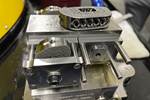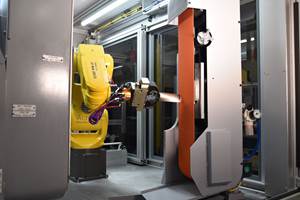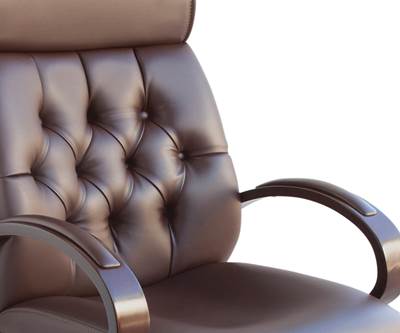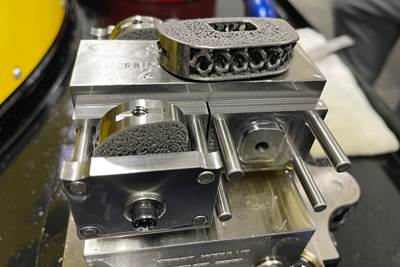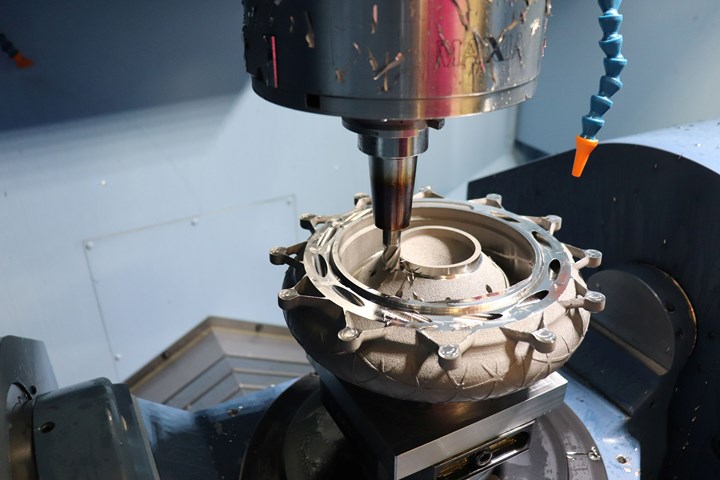
A complex part made through laser powder bed fusion not only needs machining to meet critical tolerances, it needs that machining to happen fast to meet lead time expectations. Keselowski Advanced Manufacturing’s success with additive manufacturing has involved developing a machine shop that operates to the needs and pacing of AM. The part seen here is similar to space-industry turbomachinery components that receive extra stock and features during LPBF because of the way this allows machining to be performed more effectively. Photo: KAM.
For Keselowski Advanced Manufacturing (KAM), success with additive manufacturing happens on the so-called “subtractive” machines.
The Statesville, North Carolina, company produces highly engineered metal components for industries including aerospace and defense through laser powder bed fusion (LPBF) on 20 metal additive machines. But more than just the 3D printing goes into this production. “For us, 60% of the challenge of additive manufacturing is in the CNC machining,” says company owner and founder Brad Keselowski.
Part of the reason this is true relates to challenges addressed and process controls implemented in other areas. When the company started in 2019, Keselowski would not have said the biggest challenge is machining. Early struggles with making good parts proved to be traceable to impurities in a batch of powder. That particular failing of the powder was an unfortunate fluke the company has not since experienced, but the company learned from this how to equip its own powder lab to validate the quality of incoming powder before it is put to use. In a similar way, various challenges and successes with developing and producing intricate parts — the largest majority of which have been for the aerospace industry and the majority of that for space — have taught the company various tactics for realizing efficient and predictable production on its LPBF machines. Yet machining is ultimately the step that achieves the final form and tolerances of these parts, and so, inevitably, every engineering decision has to anticipate machining being able to be performed effectively and accurately. Machining is also the last critical step before a part is delivered to the customer, so machining has to be performed quickly, particularly given the possibility that unexpected delays related to the 3D printing may have eaten up lead time along the way.
The result is a machine shop that arguably should not even be thought of as performing “subtractive” manufacturing at all — not if that term is meant to be distinct from additive. For KAM, its 13 metalcutting CNC machine tools are doing the same work as the LPBF machines. That is, they are all contributing to the work of additive manufacturing for end-use metal part production. KAM performs this work at a production capacity that rivals all but a few other metal AM providers, and part of what this entails is a machine shop that operates far differently than any machining facility that is not principally focused on AM.
This is worth seeing. There is a danger of ascribing too much of the work of AM to the 3D printing platform, whatever that might be. While 3D printing is an operation, additive manufacturing is a process. AM’s success has gone far enough that 3D printing has reliably proven itself as a production operation, so now it is time to more fully appreciate the role of other steps in the process. For metal parts made additively, this means coming to understand the ways that machining operates very differently when additive manufacturing is the process it serves.
Just one of the differences is this: At KAM, that machine shop is often quiet.
More Rockets Than Racecars
KAM was founded in 2018 as a business devoted to production-scale additive manufacturing. It shipped its first customer part made through LPBF in 2019.
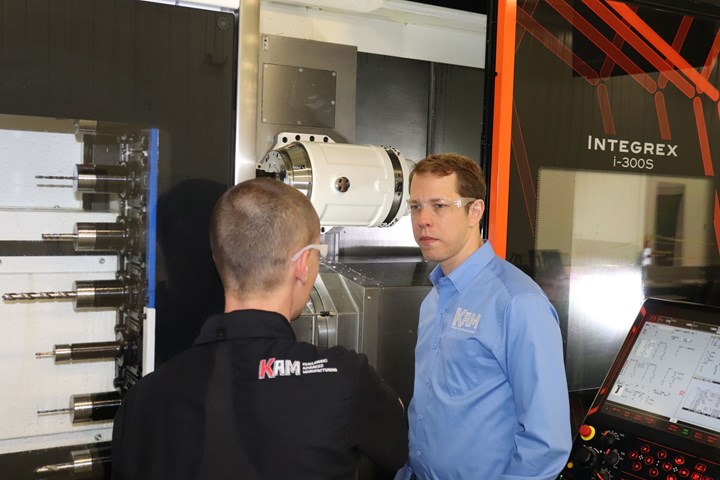
Company owner and founder Brad Keselowski developed an appreciation for advanced manufacturing beginning with its success in racing. The additive manufacturing business he has built is more focused on sectors such as aerospace, but the culture of motorsports teams is a close fit for the way the stakeholders in AM process need to interact. Photo: KAM.
Founder Brad Keselowski is known in stock car racing. He is a championship winner of NASCAR’s Cup Series and Xfinity Series, and the owner of Brad Keselowski Racing and co-owner of Roush Fenway Keselowski Racing. His appreciation for advanced manufacturing began with seeing it as an enabler to racing performance, but it grew to become an appreciation for advanced manufacturing, period. Having his own recognized name on the business therefore both is and is not a helpful clue to the company’s work, he says.
In part it is not helpful, because there is an implication the business is focused on motorsports. KAM’s largest single market is in fact space; the company has done more to advance rocket engines than racing engines. According to Keselowski, “People we can help sometimes need to learn how extensively our business serves aerospace and defense, and how little of it is motorsports, before they reach out to us.”
But then there is a different way in which the name is an apt description of the company. That is in the culture, and in the way KAM operates — the way it discovered it needs to operate. “Motorsports culture is in our DNA,” Keselowski says. That is, the kind of culture seen in a pit crew, where knowledgeable technical specialists all come together and trust one another to realize a shared goal quickly as an interdependent team. Compared to the established cultures of other forms of manufacturing, the culture of motorsports is a nearer fit to what additive manufacturing needs.
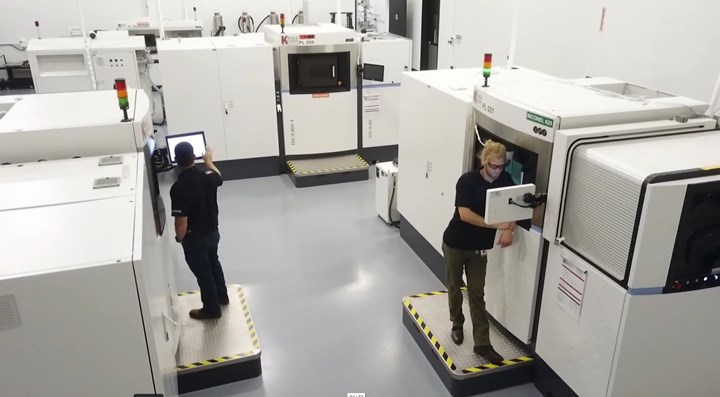
KAM runs production on 20 LPBF machines, most of them from EOS. Photo: KAM.
KAM knows this from experience. At first, the company’s workflow was structured more linearly, with jobs proceeding from department to department in sequence, as they would in a more typical production facility. But the challenge with additive, and with the complexity of components LPBF is called to produce, is in the way seemingly small choices in any one area might affect the prospects for success in another. Engineering, 3D printing, machining and quality all are interconnected, to the extent that the downstream steps have to be part of the conversation at the outset and all throughout a job’s development. Again, all these steps are additive manufacturing — the process is not just in the 3D printing. When machining is respected in the additive process, the 3D printing might even work harder, adding more material in the form of additional stock or features that can help the machining easily succeed.
Showing real examples of how this has played out is difficult, because so much of KAM’s work is proprietary and because so many of KAM’s machining tactics have become its own valuable IP. However, the company created the part seen in the video below to illustrate the interaction between LPBF and machining. The part design is near to the design of turbo pump nozzles for the space industry, and representative of the type of part geometry for which additive manufacturing may involve adding extra stock for machining, and even adding extra threaded holes made through 3D printing for the sake of simplifying the machining’s workholding. Watch:
Choices like these — more time in 3D printing for the sake of less time in machining — represent the kind of tradeoffs the pit-crew-style approach to job planning makes possible. In light of just the 3D printing operation, adding stock and adding features seems like a costly choice; LPBF build times are already long enough. But machining is where the time crunch is likely to occur relative to the customer’s due date. And machining is the operation that must be performed accurately, because there is no other operation after this to save the part if there is an error. Additional time in LPBF therefore might be the consideration that makes the total processing time shorter and even safeguards the likelihood of success.
Plus, under some conditions, time in 3D printing is less costly and easier to extend than the time in machining. This is maybe the most striking way in which additive manufacturing produces a different kind of manufacturing facility and workflow. With additive, time and how it is accounted for are different.
24-Hour Increments
The machine shop includes sophisticated machine tools including Mazak Integrex machines for combining intricate turning and milling operations within a single cycle, as well as 10-pallet Matsuura five-axis machining centers for running complex machining jobs in series through unattended production. This machining capacity supports and complements LPBF machines of varying build sizes from EOS, GE Additive and SLM Solutions. Walking through the machine shop, Keselowski says, “Visitors expect to see lots of green lights on the machines for lots of machining work in progress in any given minute, or any given hour.” But productivity during time increments like these is not the proper measure for additive, he says. For KAM, LPBF machines set the pace. That means thinking and planning have to be done in increments of days. “We have to look at everything from a 24-hour standpoint,” he says. That includes machining.
This time perspective starts with the additive machines. Build cycles for high-value parts might extend through multiple days, and this is fine; it is a part of the nature of additive. But what this means is that productivity is driven not by build time, but by the availability of a person to unload the job and start the next one when the build ends. This threshold — coordinating cycles with staffing — favors 24-hour increments. A design change that adds 3 hours to what had been a 20-hour build therefore is potentially no problem. But adding 1 hour to what had been a 48-hour build might be unacceptable, because that addition might push the timing into an additional day, where the cycle might no longer coordinate well with the availability of an employee to unload the job.
Machining follows the same rhythm. Its pacing at KAM is more like that of LPBF builds than like the pacing of other machine shops. During the staffed daytime hours, setup is what is important. Cuts are light on additive parts, but there may be lots of them. A part I saw being setup as I walked through the machining area during my visit was so complex, with so many tight-tolerance features, that it had over 100 critical dimensional callouts for machining. Setting up a part like this for machining can easily take multiple hours. This happens during the day, and much of the actual metalcutting is then left to run during nighttime hours.

The machine shop complements, and is vital to completing, the work of the metal 3D printing machines. However, that priority makes this machine shop different from others. Ongoing production is not the priority. Machine availability and using the daytime hours to set up intricate machining jobs define this shop's pacing. Photo: KAM.
But this activity is just part of the reason why CNC machine tools are often not in cycle during the day. For KAM, much of the way machining realizes its value as an extension of additive also lies in the machines’ availability, which sometimes means they wait.
“I don’t want us to take conventional batch machining jobs to fill the time and help our revenue,” Keselowski says. “We could. We have the capacity. But that would compete against our culture.” And more, he says it might render a needed machine tool unavailable in the final stretch when a high-value additive part has completed 3D printing and is in need of rapid, precise machining to meet the customer’s tolerance demands and timing. In KAM’s operation, it is better to let the machine tools sit still and be ready.
But there is more. The role of machining in metal AM, and its interdependence with 3D printing, is even more complex. Based on conversations with not just Keselowski but also KAM team members including VP of engineering and sales James O’Toole and VP of operations Haley Cook, here is more color and detail on why success in additive entails a machine shop that is quiet and at the ready:
- AM process development is iterative. Getting to a repeatable process is likely to involve producing early trials of the part and learning from experience. And some aspect of what needs to change in a part’s process might not be revealed until the problem leads to a difficulty in machining. Machining abruptly ends at that point as the process is reevaluated to address the problem. Tightly scheduling machining capacity is difficult when a large portion of the machining work is exploratory in this way.
- Customers need freedom to change designs; this freedom is an important reason many of them use additive. However, seemingly small design changes to a part can dramatically affect the prospects for machining. Example: One recent customer design change eliminated the possibility for keeping parts on the AM build plate as they headed to machining. The actual geometric change was slight, but it meant the machining operation had to be completely reconceived.
- Customers expect AM to be responsive and fast. It is that, O’Toole notes, but customers still are prone to aggressive expectations. Having the availability to both print and machine a complex one-off part quickly can be the crucial factor for winning serial production later.
- Related to the preceding point, success can lead to scaling. In KAM’s history so far, more than 50 part numbers have matured into recurring production jobs. This work is the payoff of the company’s investment into process development, but this work also consumes capacity. The company’s aim is scale production via additive, so it needs to have the capacity, including machining capacity, to support this aim being realized.
The result of all of this is machine tools that sit and wait — until they don’t. Until the production orders come and the availability of the machines is filled. That happens, too.
“We really don’t understand how to account for overall equipment effectiveness in our process,” Keselowski says. “We don’t even know what our OEE should be.”
That’s not a flip statement. It comes from a genuine effort at KAM to organize the process even better than it is today, and to understand the information needs and performance needs that are important to the overall process’s success. And in this, machining is leading the way.
ERP for Additive Manufacturing
While the additive capability sets the pace and defines the timing of the process, machining is paying the enterprise back by providing the software for oversight. KAM has found its most promising ERP solution in ProShop, which is a planning system developed with machine shops in mind.
“ERP for additive manufacturing is not sufficiently respectful of machining,” Keselowski says. For KAM, that’s a fundamental problem. Management software not respectful of machining is missing a vital step.
ProShop has succeeded with KAM in part because the software company has invested in working with the manufacturer to try to extend the assumptions on which its software is written into the needs of production additive. Certain features have proven very adaptable. For example, a feature called “Run Together,” for assigning different jobs into the same cycle and setup on a CNC machine tool, has been adapted into “Print Together,” for managing the frequent cases in which multiple job numbers are nested together on the same plate within the same AM build.
Other changes are harder. Traceability of powder material for LPBF has proven to be a more difficult challenge to integrate into the ERP software, but he says, “I think we have found a great solution.” As a result, the interconnection between machining and 3D printing at KAM may soon lead to this: While the machine tools are operating at the pace of LPBF machines, the additive powder is tracked using software for CNC machining.
Related Content
Seurat: Speed Is How AM Competes Against Machining, Casting, Forging
“We don’t ask for DFAM first,” says CEO. A new Boston-area additive manufacturing factory will deliver high-volume metal part production at unit costs beating conventional processes.
Read MoreVulcanForms Is Forging a New Model for Large-Scale Production (and It's More Than 3D Printing)
The MIT spinout leverages proprietary high-power laser powder bed fusion alongside machining in the context of digitized, cost-effective and “maniacally focused” production.
Read MoreCopper, New Metal Printing Processes, Upgrades Based on Software and More from Formnext 2023: AM Radio #46
Formnext 2023 showed that additive manufacturing may be maturing, but it is certainly not stagnant. In this episode, we dive into observations around technology enhancements, new processes and materials, robots, sustainability and more trends from the show.
Read MoreAircraft Engine MRO: How Additive Manufacturing Plus Robotic Finishing Will Expand Capacity for Blade Repair
AM offers the chance to bring fast, automated processing to individualized, part-by-part restoration of turbomachinery. A cell developed by Acme Manufacturing and Optomec is able to automatically repair 85,000 unique aircraft engine blades per year.
Read MoreRead Next
What Your CEO Needs to Know About Additive Manufacturing
Additive manufacturing promises to affect far more than manufacturing alone. When evaluating AM, the perspective needed is the view that sees the impacts all across the enterprise.
Read MoreView From My Shop: 3D Printing and Postprocessing With Tangible Solutions
Collaboration between Tangible Solutions’ additive and machining departments simplifies their work. Learn more in this episode of The View From My Shop.
Read MoreAn Additive Manufacturing Machine Shop
Finish machining additively manufactured implants requires different pacing and workflow than cutting parts from stock — different enough for an experienced manufacturer to warrant a dedicated machine shop.
Read More




